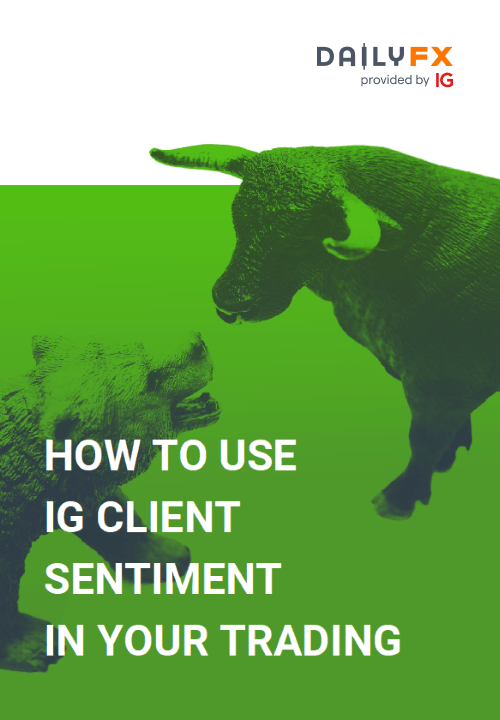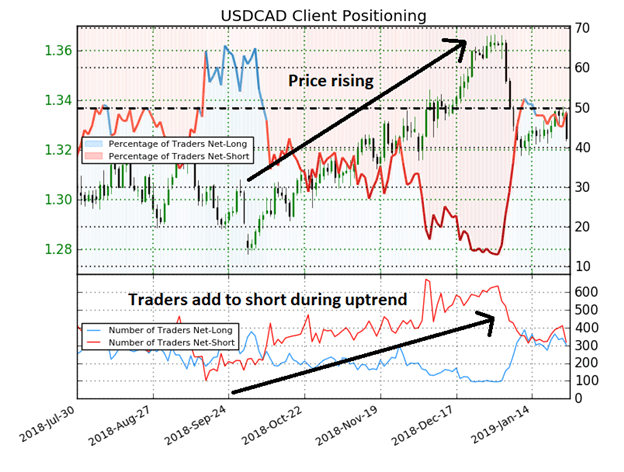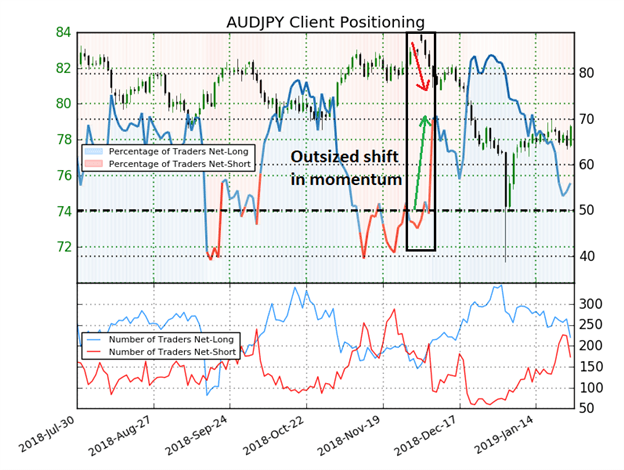Using IG Client Sentiment for a More Well-Rounded Approach
There are many ways to measure trader sentiment in the FX market, but IG Client Sentiment (IGCS) stands out for several reasons which can be advantageous for short-term traders.
There are many ways that traders can measure sentiment in the FX market, and of course, there isn’t a one-size fits all method for analyzing it. Depending on your objectives one may be more well-suited for you than another. In this article, we will look at three measurements – futures positioning data, options, and the IG Client Sentiment Index, with the latter most having significant appeal to short-term traders for reasons we’ll discuss.
COT Report
The Commitment of Traders (COT) report contains positioning data on futures traders of varying sizes and intentions. It is released every Friday evening and reflects positioning held for the week ending on Tuesday.
Right away you might see one of the big limitations for using this type of information – it’s not timely, at least not for short-term traders. Having a once-per-week update that also has a lag from the last day the data is reported (Tuesday) to when the data is released to the public (Friday), makes it an intermediate to long-term sentiment gauge.
Options
The options market is another place a trader can look to measure sentiment data via ‘Risk Reversals’ and put-call ratios. Options activity can provide insight into market participants’ intentions through the differences between call buying (bullish bets) and put buying (bearish bets). While options can certainly be useful there is a deeper understanding of derivatives needed and access to the data isn’t readily available to market participants without paying hefty monthly fees for institutional platforms such as Bloomberg.
IG Client Sentiment (IGCS)
The IG Client Sentiment tool uses real-time retail trading data provided exclusively by IG, one of the world’s largest FX brokers. It is calculated by counting how many traders are long versus how many are short, creating a ratio or percentage representing the aggregate level of bullishness or bearishness in a currency pair. For example, if there are 600 traders long EURUSD and 400 traders short, then 60% of traders are bullish. It’s as simple as that.
There are a few factors which really make IGCS stand out as a sentiment indicator. First off, the data is in real-time, which means traders can make more timely decisions. This is not something which can be can be said about futures and options data. Furthermore, IGCS is easily viewable and free on the IG Client Sentiment page.


Recommended by Paul Robinson
Download our guide to learn more about sentiment trading
IGCS is an effective contrarian indicator. There is a natural and very consistent tendency for retail traders to fade momentum. This behavior becomes especially pronounced during strong trends. When IGCS shows traders are more bullish than bearish it is considered a signal that prices may continue to decline, and when there are more bearish traders than bullish it can indicate an upward trend may sustainable.
USDCAD Client Positioning (Traders short in upward trend)

Data Source: DailyFX, IG
Like every tool, though, it’s not without its short-comings. Because of the tendency for retail traders to fade price swings, when the price action in a currency pair becomes choppy there can be false signals as price quickly reverses direction after only short periods of time.
The effectiveness of the IG Client Sentiment indicator can also be seen in profitability numbers of retail traders. When markets aren’t trending, the fading of short-term price momentum is a good strategy as prices revert to the mean, but when a strong trend develops those trades which once worked in range-bound environment turn into out-sized losses in an absence of price reverting to the mean.
Over time traders are right more often than they are wrong, however; on average the amount of money made on winning trades is smaller (from fading prices correctly) than the amount of money lost on losing trades (getting caught on the wrong side of trend). This leads to an unfavorable risk/reward ratio and poor overall results. For more on this common mistake, you can check out our extensive guide, ‘Traits of a Successful Trader’.


Recommended by Paul Robinson
Download our Traits of Successful Traders Guide
Momentum shifts show important information. Watching how quickly the data shifts is another powerful way to gain valuable information from IGCS. The change in the direction of a trend often starts with a change in price action and sharp shift in market positioning. These sudden shifts in momentum are caught in real-time by IG Client Sentiment data and can help put traders on the right side of the trade early in a price move.
AUDJPY Client Positioning (Strong shift in momentum compared to price)

Data Source: DailyFX, IG
To conclude, IGCS is not a stand-alone indicator but can be a powerful addition to a trader’s toolbox. It’s prudent to combine disciplines as no one on its own provides enough of an edge to make a trading decision. For example, a technical trader might identify an important support level on a pullback in a currency pair which is not only trending higher but also has a bullish sentiment signal (crowd is short). The independent factors (support in uptrend & sentiment) have merit on their own, but together they can combine for a more rounded approach that provides a stronger trading edge. Having a sound trading edge is a key to building confidence as a trader. For more information and live sentiment updates, check out the IG Client Sentiment page.
Looking to trade in a simulated environment to better learn strategies, tactics and approach? Click here to request a free demo with IG group.


 Signal2forex.com - Best Forex robots and signals
Signal2forex.com - Best Forex robots and signals




